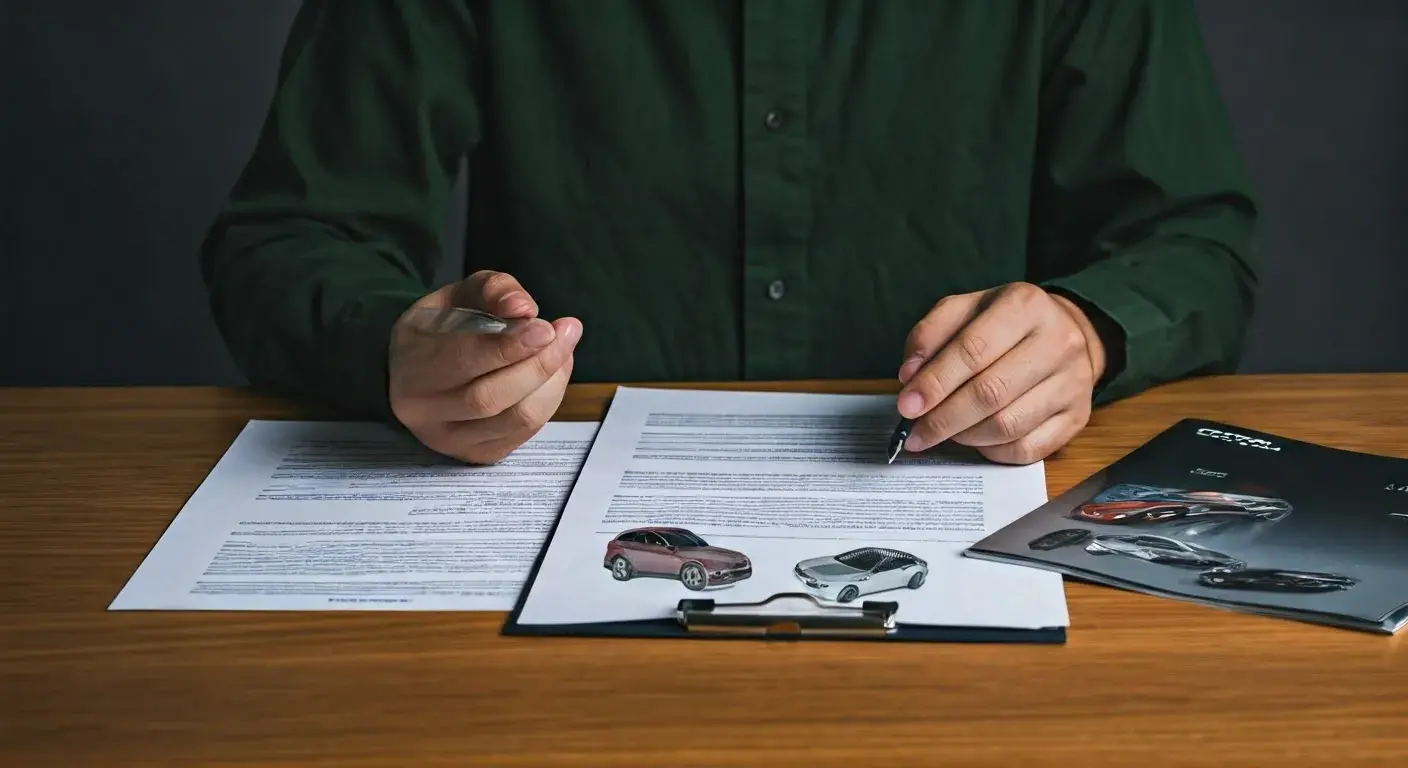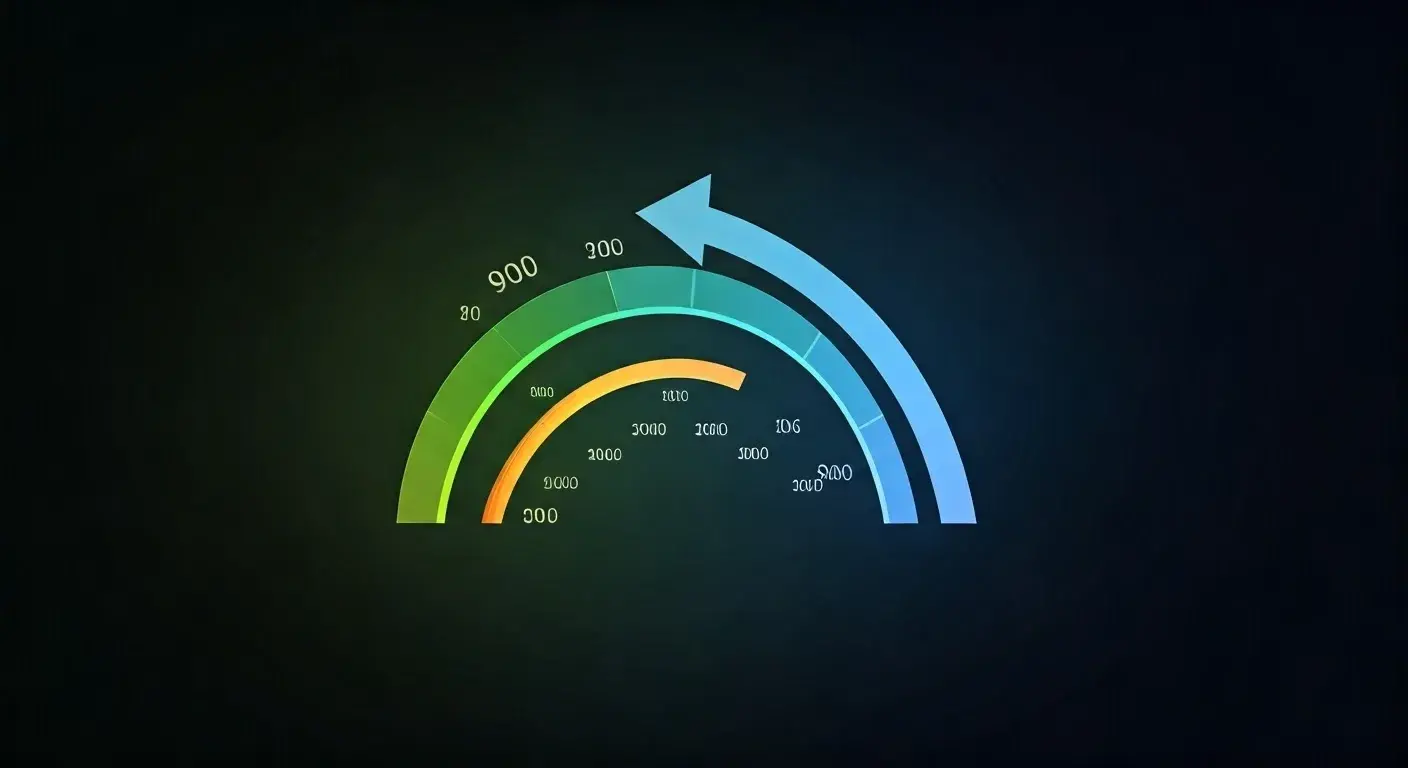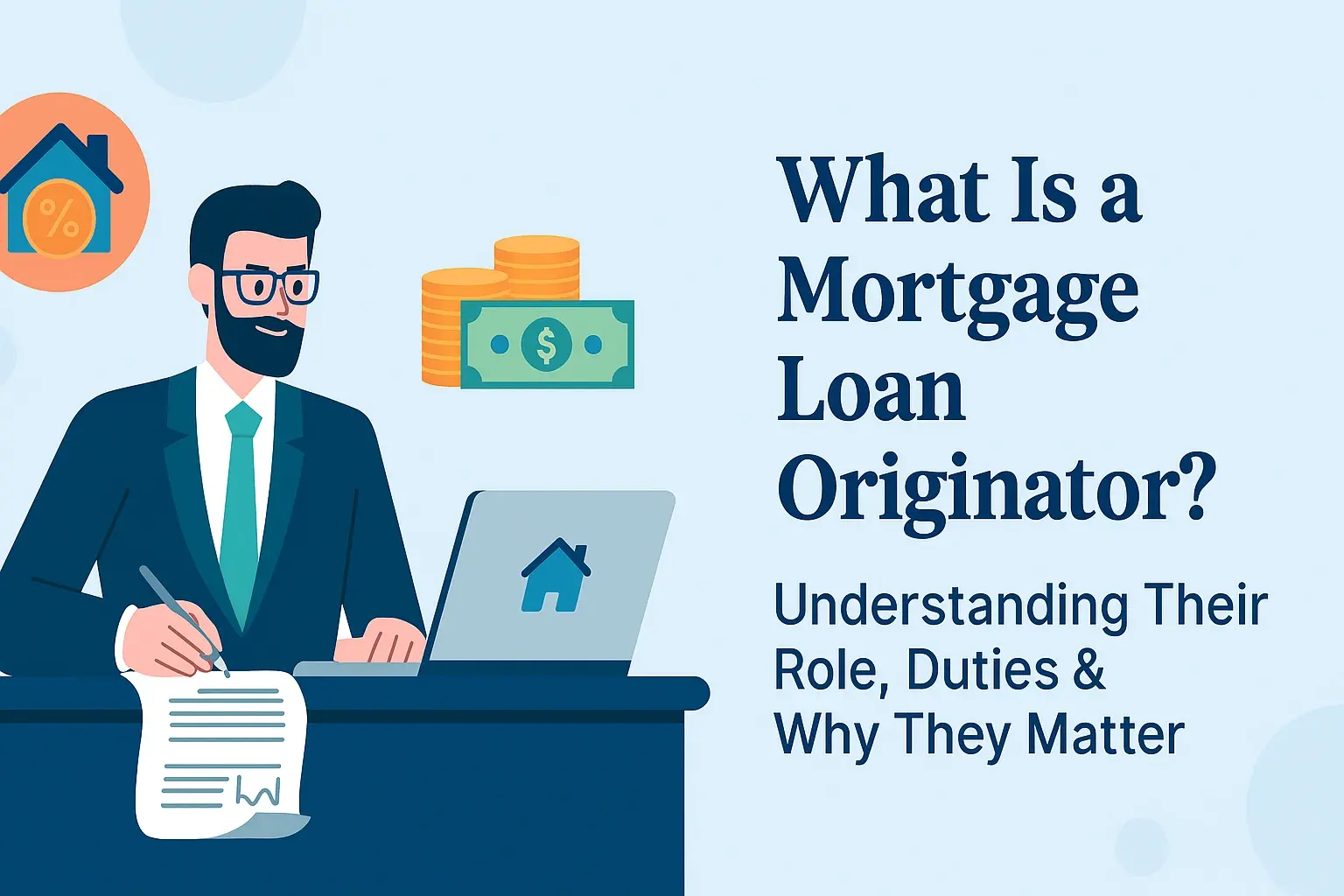-
Posted on: 02 Apr 2025

-
Understanding the credit score needed to buy a car is crucial for any buyer. This guide breaks down the minimum requirements, how scores impact loan terms, and strategies to secure the best auto loan, even with less-than-perfect credit.
What is a Credit Score and Why Does it Matter for Car Loans?
Your credit score is a three-digit number that represents your creditworthiness – essentially, how likely you are to repay borrowed money. Lenders use it to assess risk when you apply for loans, including car loans. A higher score signals to lenders that you are a responsible borrower, leading to better loan terms, lower interest rates, and a higher chance of approval. Conversely, a low credit score suggests a higher risk, which can result in loan denials, higher interest rates, and less favorable repayment terms. For car purchases, your credit score is a gatekeeper to financing and directly influences how much you'll pay over the life of the loan. Understanding your score is the first step to a successful car-buying journey.
In 2025, the automotive market continues to be a significant sector for consumer lending. Auto loans are one of the most common types of credit extended to individuals, making the credit score requirement a focal point for millions of car buyers each year. The Federal Reserve and major credit bureaus like Experian, Equifax, and TransUnion consistently provide data on lending trends and consumer credit health. Auto lenders, whether they are traditional banks, credit unions, or captive finance companies associated with car manufacturers, rely heavily on credit scoring models to make informed decisions. These models, such as FICO and VantageScore, analyze your credit history to predict future repayment behavior.
The impact of your credit score on a car loan cannot be overstated. It's not just about getting approved; it's about the total cost of the vehicle. A seemingly small difference in interest rate can translate into thousands of dollars saved or spent over the typical 60-month loan term. For instance, a buyer with excellent credit might secure a 3.9% APR, while someone with poor credit could face rates as high as 15% or even more. This disparity highlights the critical importance of knowing your credit score and taking steps to improve it before you step into a dealership.
Beyond the immediate financial implications, a good credit score can also simplify the car-buying process. When lenders view you as a low-risk borrower, they are often more flexible with down payment requirements and loan terms. This can make the entire experience less stressful and more empowering. Conversely, a low score can lead to a frustrating cycle of rejections and unfavorable offers, potentially forcing you to settle for a less suitable vehicle or an unaffordable loan. Therefore, investing time in understanding and improving your credit score is an investment in your financial future and your ability to acquire reliable transportation.
Credit Score Tiers and Their Impact on Car Buying
Credit scores are generally categorized into different tiers, each representing a level of credit risk. These tiers are not official designations but rather common classifications used by lenders and financial advisors to understand creditworthiness. The most widely recognized scoring model, FICO, typically ranges from 300 to 850. For auto loans, lenders often group scores into broad categories: excellent, very good, good, fair, and poor. Each of these tiers comes with distinct expectations and outcomes when seeking financing for a vehicle.
Excellent Credit (750-850)
Individuals with scores in this range are considered prime borrowers. Lenders see them as having a very low risk of default. For car buyers with excellent credit in 2025, this typically translates to:
- Highest Approval Rates: Almost guaranteed approval for auto loans.
- Lowest Interest Rates: Access to the most competitive Annual Percentage Rates (APRs), often below 4%.
- Favorable Loan Terms: Options for longer loan terms (up to 84 months in some cases) and potentially lower down payment requirements.
- Wider Selection: Ability to finance luxury vehicles or higher-priced models more easily.
These borrowers are highly sought after by lenders, and they can often negotiate the best possible financing terms, sometimes even securing 0% APR promotional offers from manufacturers.
Very Good Credit (700-749)
This tier also represents a strong credit profile. Borrowers in this range are still considered low-risk, though slightly less so than those with excellent credit. The benefits include:
- High Approval Rates: Strong likelihood of loan approval.
- Competitive Interest Rates: Access to very good APRs, typically in the 4%-6% range.
- Good Loan Terms: Standard loan terms are usually available.
While they might not always qualify for the absolute lowest promotional rates, buyers with very good credit can still secure excellent financing that makes car ownership affordable.
Good Credit (650-699)
This is often considered the average credit score range. Borrowers here are seen as moderate risk. While approval is generally likely, the terms may not be as advantageous as for higher tiers.
- Good Approval Odds: Most lenders will approve loans, but some may require more scrutiny.
- Moderate Interest Rates: APRs can range from 6% to 10%.
- Potential for Higher Down Payments: Some lenders might request a larger down payment.
This is a common range for many car buyers, and securing a loan is usually achievable, though careful shopping for the best rates is essential.
Fair Credit (550-649)
This tier indicates a higher risk to lenders. Borrowers in this range may have had past credit issues, such as late payments or defaults.
- Challenging Approval: Approval is not guaranteed and may require a co-signer or a significant down payment.
- Higher Interest Rates: APRs can be substantial, often ranging from 10% to 18%.
- Stricter Terms: Lenders might offer shorter loan terms or require a larger down payment to mitigate risk.
- Limited Lender Options: Fewer lenders will offer financing, and options may be limited to subprime lenders.
For buyers in this range, improving their score before applying or preparing for a higher overall cost of the vehicle is crucial.
Poor Credit (Below 550)
Scores below 550 are considered subprime or deep subprime. This indicates a high risk of default, often due to significant credit problems like bankruptcies, repossessions, or extensive delinquencies.
- Difficult Approval: Loan approval is very difficult and often requires a strong co-signer with excellent credit.
- Very High Interest Rates: APRs can exceed 18% and may even reach 25% or higher.
- Significant Down Payment: A substantial down payment is almost always required.
- Limited Vehicle Choices: Financing may only be available for older, less expensive vehicles.
Buying a car with poor credit is challenging and expensive. Focus should be on improving the score and exploring all financing avenues, including buy-here-pay-here dealerships, which often have less stringent requirements but typically higher costs.
It's important to note that these tiers and associated rates are general guidelines for 2025 and can fluctuate based on economic conditions, lender policies, and the specific vehicle being financed. Lenders also consider factors beyond just the FICO or VantageScore, such as your debt-to-income ratio and employment history.
What Credit Score is Required to Buy a Car? The Numbers Explained
The question "What credit score is required to buy a car?" doesn't have a single, definitive answer because it varies significantly by lender, loan product, and the borrower's overall financial profile. However, we can establish general benchmarks based on common lending practices in 2025.
The "Sweet Spot" for Approval
Generally, a credit score of 660 or higher is considered a good benchmark for most mainstream auto loan approvals. With a score in this range, you are likely to be approved by a wide variety of lenders, including banks, credit unions, and manufacturer finance arms, and you can expect relatively competitive interest rates. This is often referred to as the "good credit" tier.
Minimum Requirements for Different Lenders
While 660 is a good target, let's break down what different credit score ranges might encounter:
For Prime Lenders (Banks, Credit Unions, Captive Finance Companies):
- Excellent Credit (750+): You'll easily qualify for the best rates and terms.
- Very Good Credit (700-749): High likelihood of approval with excellent rates.
- Good Credit (660-699): Solid approval chances with good, competitive rates.
- Fair Credit (620-659): Approval is possible, but rates will be higher, and lenders might be more selective. Some lenders may have a minimum around 620 for standard auto loans.
- Poor Credit (Below 620): Approval becomes significantly harder. Many prime lenders may decline applications. If approved, expect very high interest rates and potentially strict terms. Some lenders might consider scores as low as 580-600 for "near-prime" auto loans, but these are less common and more expensive.
For Subprime Lenders (Specialty Auto Lenders):
These lenders specialize in working with borrowers who have lower credit scores. Their minimum requirements are generally lower, but their interest rates are considerably higher.
- Fair Credit (580-619): Subprime lenders are more likely to approve loans in this range. Interest rates will be elevated.
- Poor Credit (500-579): This is the typical target range for subprime lenders. Approval is possible, but rates will be very high, and down payments are often mandatory. Some subprime lenders may go as low as a 450 score, but this is rare and comes with extreme costs.
- Very Poor Credit (Below 500): Approval is extremely difficult. Options may be limited to buy-here-pay-here (BHPH) dealerships or requiring a very strong co-signer.
The Role of the FICO Auto Score
It's worth noting that lenders often use a specialized version of your credit score called the FICO Auto Score. This score is tailored to predict the likelihood of someone defaulting on an auto loan specifically. While it's based on your general credit history, it might differ slightly from your standard FICO score. The general ranges mentioned above still apply as a good guideline.
Illustrative Example: Interest Rate Differences (2025 Data)
To illustrate the impact, consider a $25,000 car loan for 60 months:
Credit Score Range Estimated APR Estimated Monthly Payment Total Paid Over Loan Term 750+ (Excellent) 3.9% $482 $28,920 660-689 (Good) 6.5% $516 $30,960 580-619 (Fair/Subprime) 12.0% $575 $34,500 Below 550 (Poor) 18.0% $630 $37,800 As you can see, a difference of just a few percentage points in APR, driven by credit score, can lead to thousands of dollars in additional costs over the life of the loan. This underscores why aiming for the highest possible credit score before car shopping is so important.
Beyond the Score: Other Factors Lenders Consider
While your credit score is a primary determinant in auto loan approval and terms, it's not the only factor lenders evaluate. They conduct a comprehensive risk assessment to ensure you can repay the loan. Understanding these additional factors can help you present a stronger application, especially if your credit score is borderline.
1. Debt-to-Income Ratio (DTI)
Your DTI is a crucial metric that compares your total monthly debt payments to your gross monthly income. Lenders use it to gauge your ability to handle new debt.
- Calculation: DTI = (Total Monthly Debt Payments / Gross Monthly Income) x 100
- What Lenders Look For: Most auto lenders prefer a DTI of 43% or lower. Some may go up to 50% for borrowers with strong credit, while others might require a lower DTI for those with fair or poor credit. This includes not just your potential car payment but also existing loans (mortgage, student loans, credit cards) and other recurring debts.
- Impact: A high DTI can signal that you might be overextended financially, even with a good credit score.
2. Employment History and Income Stability
Lenders want to see that you have a stable source of income to make consistent loan payments.
- What Lenders Look For: Typically, at least two years of employment in the same field or with the same employer is preferred. They will verify your income through pay stubs, tax returns, or bank statements.
- Impact: Frequent job changes or unstable employment can be a red flag, even with a good credit score.
3. Loan-to-Value Ratio (LTV)
The LTV ratio compares the amount you're borrowing for the car against the car's actual market value.
- Calculation: LTV = (Loan Amount / Vehicle Value) x 100
- What Lenders Look For: Lenders aim for a lower LTV to protect themselves in case of default. For new cars, LTV is often capped around 100%-110% (to include taxes and fees). For used cars, it might be lower, perhaps 80%-90% of the vehicle's appraised value.
- Impact: If you're trying to finance more than the car is worth, or if you have a very low credit score, lenders may require a larger down payment to reduce the LTV.
4. Down Payment Amount
A down payment is the portion of the car's price you pay upfront in cash.
- Impact: A larger down payment reduces the loan amount, lowers the LTV, and signals to the lender that you are financially committed. It can significantly improve your chances of approval and help you secure better terms, especially if your credit score is not ideal. Many lenders recommend at least 10-20% for used cars and 5-10% for new cars, but this can vary.
5. Vehicle Age and Mileage
The type of car you're buying can also influence loan approval and terms.
- Impact: Newer cars with lower mileage are generally easier to finance and come with better rates. Older vehicles, especially those with high mileage, might be considered higher risk by some lenders, potentially leading to higher rates or shorter loan terms. Some lenders have age or mileage limits for auto loans.
6. Credit History Details
Beyond the score itself, lenders will look at the specifics of your credit report.
- What Lenders Look For: They examine the length of your credit history, the types of credit you've used (credit cards, installment loans), your payment history (on-time payments vs. late payments), and any derogatory marks (collections, bankruptcies, repossessions). A long history of responsible credit use is a positive sign.
- Impact: A recent bankruptcy or a history of late payments, even if your score has improved, can still be a hurdle for some lenders.
By understanding and addressing these factors, you can strengthen your overall loan application and increase your chances of getting approved for a car loan with favorable terms, regardless of whether your credit score is in the excellent or fair range.
Strategies to Improve Your Credit Score for a Car Loan
If your credit score isn't where you'd like it to be for buying a car, don't despair. Several effective strategies can help you improve your score, potentially saving you thousands of dollars in interest over the life of your auto loan. The key is to be consistent and patient, as credit score improvement takes time.
1. Check Your Credit Reports and Scores
The first step is to understand your current credit standing.
- Action: Obtain free copies of your credit reports from Equifax, Experian, and TransUnion at AnnualCreditReport.com. You can also get free credit scores from many banks, credit card issuers, and dedicated credit monitoring services.
- Why it helps: This allows you to identify any errors, inaccuracies, or fraudulent activity that might be dragging down your score. Dispute any errors immediately with the credit bureaus.
2. Pay Bills On Time, Every Time
Payment history is the single most significant factor influencing your credit score (accounting for about 35% of a FICO score).
- Action: Set up automatic payments or calendar reminders for all your bills, including credit cards, loans, utilities, and rent. Even one late payment can negatively impact your score.
- Why it helps: Consistently making on-time payments demonstrates reliability to lenders.
3. Reduce Your Credit Utilization Ratio
Credit utilization (how much of your available credit you're using) is the second most important factor (around 30% of a FICO score).
- Action: Aim to keep your credit card balances below 30% of your credit limit, and ideally below 10%. Pay down existing balances aggressively. If possible, ask for a credit limit increase on existing cards (without increasing spending) to lower your utilization.
- Why it helps: A low utilization ratio suggests you're not over-reliant on credit.
4. Avoid Opening Too Many New Credit Accounts at Once
Applying for multiple credit accounts in a short period can result in multiple hard inquiries on your credit report, which can temporarily lower your score.
- Action: Only apply for credit when you truly need it. If you're shopping for a car loan, try to do so within a short timeframe (e.g., 14-45 days, depending on the scoring model) so that multiple inquiries for the same type of loan are treated as a single inquiry.
- Why it helps: Minimizes the negative impact of hard inquiries.
5. Keep Old, Unused Credit Accounts Open
The length of your credit history (about 15% of a FICO score) matters. Closing older accounts can shorten your average credit history and reduce your overall available credit, potentially increasing your utilization ratio.
- Action: Unless an old card has a high annual fee or you're tempted to overspend, consider keeping it open and making an occasional small purchase (and paying it off immediately) to keep it active.
- Why it helps: Maintains a longer credit history and preserves your overall credit utilization.
6. Settle Delinquent Accounts and Collections
Negative marks like collections, charge-offs, or judgments significantly harm your credit score.
- Action: Address any outstanding collections or past-due accounts. While these items remain on your report for up to seven years, settling them (even if for less than the full amount) can sometimes lead to a slight score improvement or at least prevent further damage.
- Why it helps: Shows lenders you are taking steps to resolve past issues.
7. Consider a Secured Credit Card or Credit-Builder Loan
If you have very limited credit history or a very low score, these tools can help build positive credit.
- Secured Credit Card: You provide a cash deposit that becomes your credit limit. Use it for small purchases and pay it off in full each month.
- Credit-Builder Loan: A small loan where the borrowed amount is held in an account by the lender. You make payments, and once the loan is paid off, you receive the funds.
- Why it helps: Both report your payment activity to the credit bureaus, helping to establish or rebuild your credit history.
8. Be Patient
Credit score improvement doesn't happen overnight. It requires consistent, responsible financial behavior over time.
- Action: Focus on implementing these strategies consistently. Monitor your credit score regularly to track progress.
- Why it helps: Building a strong credit profile is a marathon, not a sprint.
By actively working on these areas, you can significantly improve your credit score in the months leading up to your car purchase, positioning yourself for better loan offers and a more affordable car-buying experience.
Navigating Auto Loan Options with Different Credit Scores
Securing an auto loan involves understanding the various avenues available and how your credit score influences your choices. Whether you have excellent credit or are working with a lower score, there are options, but the path and the cost will differ.
For Excellent to Good Credit (660+)
If your credit score is in this range, you have the most leverage and the widest array of financing options.
- Manufacturer/Captive Finance Companies: Companies like Ford Credit, Toyota Financial Services, or GM Financial often offer special low-APR or 0% APR financing deals to buyers with excellent credit on new models. These are often the most competitive rates available.
- Banks and Credit Unions: Traditional banks and local credit unions are excellent sources for auto loans. Credit unions, in particular, often offer slightly lower rates and more personalized service to their members. They provide competitive rates for good credit borrowers.
- Online Lenders: Numerous online lenders specialize in auto loans and can offer quick pre-approvals and competitive rates. Examples include LightStream, Capital One Auto Finance, and Ally Bank.
- Dealership Financing: While dealerships offer convenience, it's crucial to compare their financing offers with those you secure independently. They may have access to various lenders, including captive finance companies and banks.
Strategy: Get pre-approved from multiple sources (at least 2-3) before visiting a dealership. This gives you a benchmark interest rate and strengthens your negotiating position. Focus on comparing the APR and loan terms.
For Fair Credit (550-659)
Borrowers in this range will find that options become more limited, and interest rates will be higher. The focus shifts from securing the absolute lowest rate to finding an affordable and manageable loan.
- Credit Unions: Often more flexible than large banks, credit unions may offer better terms to members with fair credit.
- Online Lenders Specializing in Near-Prime: Some online lenders cater to borrowers with scores in the mid-500s to low-600s. These loans will have higher APRs.
- Dealership Financing (Subprime Programs): Dealerships often work with subprime lenders to get approvals for buyers with fair credit. Be prepared for higher interest rates and potentially shorter loan terms.
- Secured Auto Loans: Offering a larger down payment or using a co-signer with good credit can significantly improve your chances of approval and may lead to slightly better terms.
Strategy: Focus on improving your credit score before applying if possible. If not, be prepared for higher costs. A larger down payment is highly recommended. Shop around extensively and compare offers carefully, paying close attention to the APR, fees, and loan term. A pre-qualification from an online lender can give you an idea of what to expect.
For Poor Credit (Below 550)
This is the most challenging tier for auto financing. Approval is difficult, and the cost of borrowing is very high.
- Buy-Here-Pay-Here (BHPH) Dealerships: These dealerships finance cars directly from their own inventory. They often have very lenient approval requirements, sometimes requiring only a down payment and proof of income, regardless of credit score. However, their interest rates are typically extremely high (often 20-30% or more), and their vehicle inventory may be older and less reliable. Payments are often collected weekly.
- Specialized Subprime Lenders: A few lenders focus on borrowers with very low scores, but approval is not guaranteed and comes with very high APRs.
- Co-signer: The most effective strategy for many with poor credit is to find a co-signer with excellent credit. The co-signer agrees to be responsible for the loan if you default, which significantly increases your chances of approval and can help you secure a lower interest rate than you would otherwise qualify for. However, this puts the co-signer's credit at risk.
Strategy: BHPH is often a last resort due to the high costs and potential for predatory practices. A co-signer is highly recommended if possible. If you must use a BHPH dealer, negotiate the price of the car and understand all terms and fees thoroughly before signing. Consider if buying a car is the right decision at this moment or if alternative transportation is a more financially sound option while you work on rebuilding credit.
Key Considerations for All Credit Tiers:
- Pre-Approval: Always aim to get pre-approved before visiting a dealership.
- APR vs. Monthly Payment: Focus on the Annual Percentage Rate (APR), which reflects the total cost of borrowing, rather than just the monthly payment. A lower APR saves you money over time.
- Loan Term: Shorter loan terms mean higher monthly payments but less interest paid overall. Longer terms mean lower monthly payments but more interest paid over time.
- Fees: Be aware of origination fees, application fees, and other charges that can add to the cost of the loan.
- Negotiate: Don't be afraid to negotiate the price of the car and the financing terms.
Navigating auto loan options requires understanding your credit standing and exploring all available avenues. By doing your homework and comparing offers, you can find the best financing solution for your situation.
Tips for Car Buyers with Low Credit Scores
Buying a car with a low credit score (generally below 620) presents unique challenges, but it's not impossible. It requires a strategic approach, careful preparation, and a realistic understanding of the financing landscape. Here are essential tips for car buyers with low credit scores in 2025:
1. Get Pre-Approved from Multiple Sources
Even with a low score, getting pre-approved is crucial. It gives you a clear understanding of what interest rates and loan amounts you might qualify for.
- Focus: Look for online lenders and credit unions that specialize in subprime auto loans. These lenders are more accustomed to working with borrowers who have less-than-perfect credit.
- Benefit: Pre-approval arms you with a concrete offer, which you can then use to negotiate with dealerships. It also shows dealerships you're a serious buyer.
2. Consider a Co-signer
A co-signer with good to excellent credit can be your most valuable asset.
- How it works: The co-signer agrees to be legally responsible for the loan if you fail to make payments. Their credit history is used alongside yours to assess risk.
- Benefits: This significantly increases your chances of loan approval and can help you secure a much lower interest rate than you would get on your own.
- Caution: Ensure you can make all payments on time, as late payments will harm both your and your co-signer's credit. Discuss this responsibility openly with your co-signer.
3. Save for a Larger Down Payment
A substantial down payment is one of the most effective ways to mitigate the risk associated with a low credit score.
- Why it helps: It reduces the loan amount, lowers the loan-to-value (LTV) ratio, and shows lenders you are financially committed. A larger down payment can make lenders more willing to approve your loan and may even lead to slightly better interest rates.
- Target: Aim for at least 10-20% of the vehicle's price, if possible.
4. Shop for Used Cars
New cars depreciate rapidly and are generally more expensive. Used cars are typically more affordable and easier to finance with a low credit score.
- Focus: Look for reliable, certified pre-owned (CPO) vehicles or well-maintained used cars from reputable dealerships.
- Benefit: The lower purchase price means a smaller loan amount, which is less risky for lenders.
5. Research Buy-Here-Pay-Here (BHPH) Dealerships (with caution)
If traditional financing is out of reach, BHPH dealers offer in-house financing.
- Pros: They often approve buyers with very low or no credit.
- Cons: Interest rates are extremely high (often 20% or more), vehicles may be older and less reliable, and terms can be predatory. Payments are often collected weekly.
- Advice: If considering BHPH, thoroughly research the dealership's reputation, understand all terms and fees, and negotiate the car price aggressively. BHPH should generally be a last resort.
6. Be Prepared for Higher Interest Rates and Fees
Accept that you will likely pay a higher interest rate than someone with good credit.
- Focus: Your goal is to find the *lowest possible* rate for your credit situation and to understand all associated fees.
- Calculation: Use online auto loan calculators to estimate total costs with different APRs and loan terms.
7. Negotiate the Car Price First, Then Financing
Separate the car price negotiation from the financing discussion.
- Process: Agree on the "out-the-door" price of the car before discussing how you will pay for it. This prevents dealerships from inflating the car price to compensate for a low interest rate they offer.
- Benefit: Once the price is set, you can use your pre-approval to secure the best possible financing.
8. Build Your Credit While Paying Off the Loan
Use the car loan as an opportunity to build positive credit history.
- Action: Make every single payment on time, or even early. This will gradually improve your credit score over the loan term.
- Long-term Goal: By the time you pay off the car loan, you should have a significantly improved credit score, making future borrowing easier and cheaper.
9. Consider Alternative Transportation
If financing a car is proving too difficult or too expensive, re-evaluate your transportation needs.
- Options: Could you rely on public transportation, carpooling, or a less expensive vehicle that you can purchase outright with cash?
- Benefit: Sometimes, delaying the car purchase and focusing on saving money and improving your credit is the most financially prudent decision.
Buying a car with low credit requires patience, diligence, and a willingness to explore all options. By following these tips, you can navigate the process more effectively and work towards securing reliable transportation while simultaneously improving your financial future.
Planning for Your Next Car Purchase
Purchasing a vehicle is a significant financial undertaking, and planning is paramount to ensure a smooth and cost-effective experience. Whether you're eyeing a brand-new SUV or a reliable used sedan, understanding the financial landscape, particularly concerning credit scores, is the bedrock of smart car buying in 2025. This guide has illuminated the critical role of your credit score in securing auto loans, detailing the required scores for different tiers, and exploring factors beyond the score that lenders consider.
We've seen how a score of 660 or higher generally opens doors to mainstream financing with competitive rates, while scores below this threshold necessitate a more cautious approach, often involving higher interest rates, larger down payments, or the assistance of a co-signer. The stark financial differences in monthly payments and total interest paid, as illustrated by our 2025 data, underscore the immense value of improving your credit score before you shop.
For those with less-than-perfect credit, strategies such as paying bills on time, reducing credit utilization, and carefully managing new credit applications are vital steps toward score improvement. Furthermore, understanding the nuances of loan options—from manufacturer incentives to the potentially costly world of Buy-Here-Pay-Here dealerships—empowers you to make informed decisions.
Ultimately, the journey to buying a car begins long before you visit a dealership. It starts with a thorough understanding of your financial health, a proactive approach to credit management, and diligent research. By arming yourself with knowledge about credit score requirements, lender considerations, and financing strategies, you can confidently navigate the car-buying process, secure the best possible loan terms, and drive away in a vehicle that fits both your needs and your budget. Remember, a little planning today can save you a considerable amount of money and stress tomorrow.











